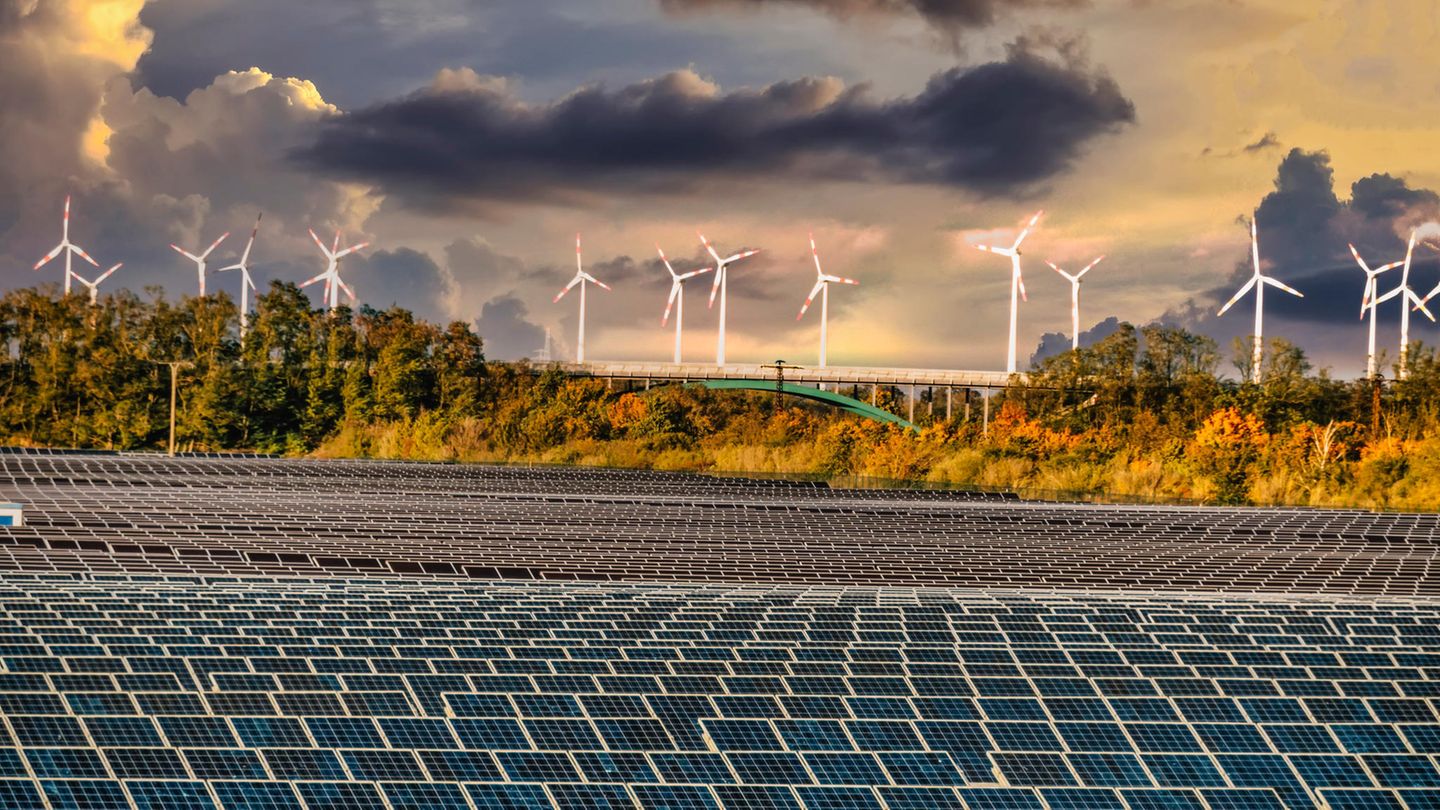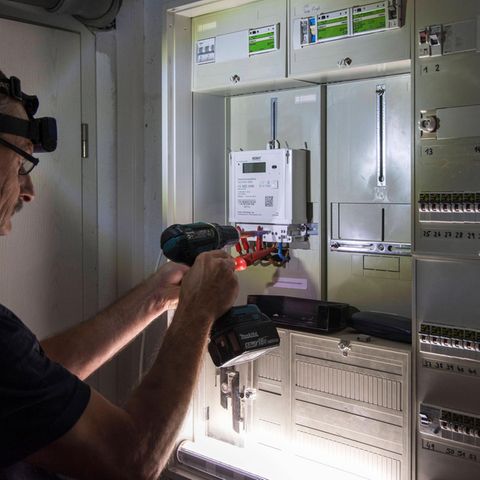Opinion
Why the 2024 green electricity record is not just reason to celebrate
Copy the current link
Almost 60 percent of electricity in Germany came from renewable energy sources in 2024 – another record. However, there are serious problems with the energy transition elsewhere.
Germany generated 431.7 billion kilowatt hours (KWh) of electricity last year. 59 percent of these came from renewable sources. That’s a record. The Republic has never been so climate-friendly in the electricity sector. So actually a reason to celebrate. Or not?
The number scares many Germans. They fear that with the increasing use of wind turbines and photovoltaic systems, the risk of sitting in the dark increases when the wind doesn’t blow and the sun doesn’t shine. This is called a dark lull.
No major power outages expected
The warnings from political opponents of the energy transition always frighten the population – even if they are made out of thin air. The responsible Federal Network Agency repeatedly points out that there is no need to fear any major power outages. Because Germany still has enough coal and gas power plants to be able to supply itself at any time.
Germany still has the lowest power outages in the world. In 2023 there was an average of 12.7 minutes per household – no more than in the past ten years.
Too much green electricity has to be wasted
Green expansion does not automatically cause higher electricity prices, as is often claimed. On the contrary: the average wholesale electricity price (day-ahead market) was 7.8 cents per kilowatt hour (kWh) in 2024 and was therefore 17.5 percent cheaper than in 2023. At the same time, the number of “expensive days” on which a kilowatt hour fell cost more than ten cents on the electricity exchange, almost half as much. All of this suggests that the energy transition is heading in the right direction in terms of the market economy.
Nevertheless, behind the 59 percent there is also a worrying development. Because Germany, which is bursting with green electricity, too often has to give away climate-friendly energy, even though it is a valuable, in-demand product across Europe. In 457 of 8,784 hours in 2024, “negative electricity prices” occurred, as experts say, because there was more electricity on offer than German households and companies could consume themselves. This value has increased by around 50 percent compared to 2023.
There is a lack of electricity storage in the regions
This was the case on New Year’s Day, for example. Nationwide consumption was 55 million kilowatt hours, but renewables alone supplied up to 66 million KWh. 48 million of these were produced by wind turbines on land and at sea, the rest by photovoltaic systems and biomass and hydroelectric power plants.
But the consequence of the abundance is not to slow down the energy transition, say experts. On the contrary: it must move faster. Above all, the expansion of the storage infrastructure must be accelerated. Things are still seriously stalling here, even though the necessary technology is available. The country needs depots to temporarily store excess green electricity. These can be large battery storage systems, but also electrolyzers that convert electricity into hydrogen, which can be converted back into electricity in gas power plants if necessary. Such storage facilities must be built regionally, as was once planned when the energy transition was invented. The excess energy must therefore remain in the regions and not be sent to the large electricity highways, which are already too often clogged primarily with fossil fuels.
Imports are rising because coal-fired power is too expensive
Fortunately, the electricity market works across Europe, which relieves pressure on Germany during this time. Because trade is flourishing there. Like all merchants, electricity traders also buy their goods where they are cheapest. Germany is increasingly the first choice with its renewables. Around 35 billion kilowatt hours flowed abroad in 2024 (mainly to Austria). Conversely, 67 million were purchased from neighbors. Here, too, the lower price was almost always the deciding factor. Green electricity from Scandinavia is now cheaper than our own coal-fired electricity from German power plants.
Of the 67 million kilowatt hours of electricity imported – despite all the prophecies of doom – only 17.2 million were nuclear power, which is still available cheaply, especially in France. Because there it is massively subsidized by the state and therefore only costs around four cents on average. That will change in 2026. Because then the support runs out. The result: French nuclear power will be around 67 percent more expensive and less attractive compared to green power.
Source: Stern





